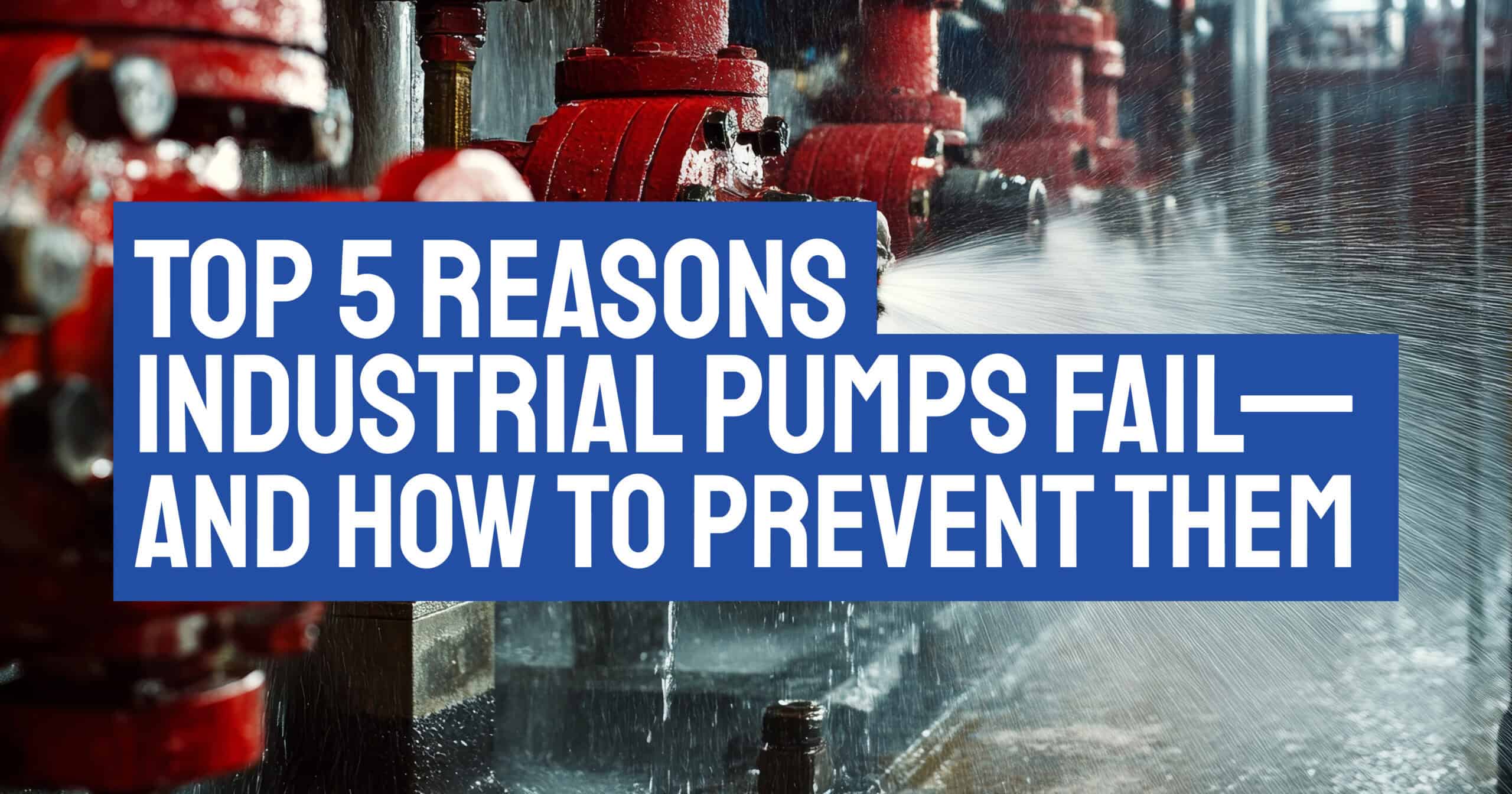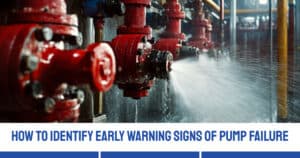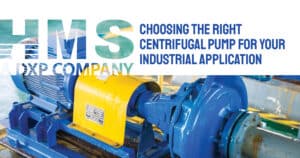Industrial pumps are the lifeblood of countless operations. But when pumps fail, downtime can be costly and disruptive. Understanding why failures occur is the first step to preventing them. Below are the five most common causes of pump failure and practical ways to address each.
1. Misalignment
The Problem:
Pump and motor shafts that are even slightly out of alignment create excessive vibration and stress on bearings, couplings and seals. Over time, this leads to premature wear and mechanical breakdown.
The Fix:
Proper alignment during installation and after any maintenance is essential. Use precision laser alignment tools rather than relying on straightedges or feeler gauges. Routine vibration analysis can also detect alignment drift before it becomes a problem.
2. Seal and Bearing Wear
The Problem:
Seals and bearings are designed to protect critical components and maintain efficiency, but they’re also among the most common points of failure. Worn or damaged seals can cause leaks and allow contaminants into the system, while bearing wear increases friction and heat.
The Fix:
Establish a proactive maintenance plan that includes regular seal inspection and bearing lubrication based on operating conditions. When replacing seals, always verify material compatibility with the pumped fluid and temperature range to prevent early deterioration.
3. Contamination and Improper Lubrication
The Problem:
Contaminants such as dirt, metal particles or water in the lubricant can degrade bearings and cause scoring or corrosion inside the pump. Likewise, using the wrong lubricant—or wrong amount of lubrication—can have equally damaging effects.
The Fix:
Store lubricants in clean, sealed containers and use proper filtration when filling or topping off systems. Implement an oil analysis program to detect contaminants early and replace lubricants on schedule. Cleanliness is key. This is especially true in harsh environments like mining, chemical processing or wastewater facilities.
4. Cavitation and Flow Issues
The Problem:
Cavitation occurs when vapor bubbles form and collapse within a centrifugal pump, often due to low suction pressure or improper system design. The resulting shockwaves can erode impellers and cause severe vibration. Similarly, operating the pump outside its best efficiency point (BEP) can increase stress and shorten its lifespan.
The Fix:
Check suction conditions, NPSH (Net Positive Suction Head), and impeller design during pump selection and installation. Maintain steady flow rates within the recommended range and inspect for restrictions in suction lines. In some cases, a variable frequency drive (VFD) can help optimize performance and reduce cavitation risk.
5. Improper Installation or Operation
The Problem:
Even the best pump can fail prematurely if it’s installed incorrectly or operated outside design parameters. Skipping system checks or using the wrong materials for the fluid type, temperature or pressure can quickly lead to damage.
The Fix:
Follow manufacturer specifications closely during installation, and work with experienced technicians who understand pump setup and system integration. Train operators to recognize abnormal conditions—such as noise, vibration or pressure fluctuations—and respond quickly before minor issues escalate.
Protect Your Investment with Expert Support
Preventing pump failure is a combination of proper design, precise installation and ongoing maintenance. Hennesy Mechanical Sales, a DXP company provides comprehensive pump services, including field alignment, vibration analysis, seal replacement and lubrication programs. Trust the pump experts to keep your systems operating at peak performance.
For all your pump selection and management needs, contact Hennesy Mechanical Sales, a DXP company today.





